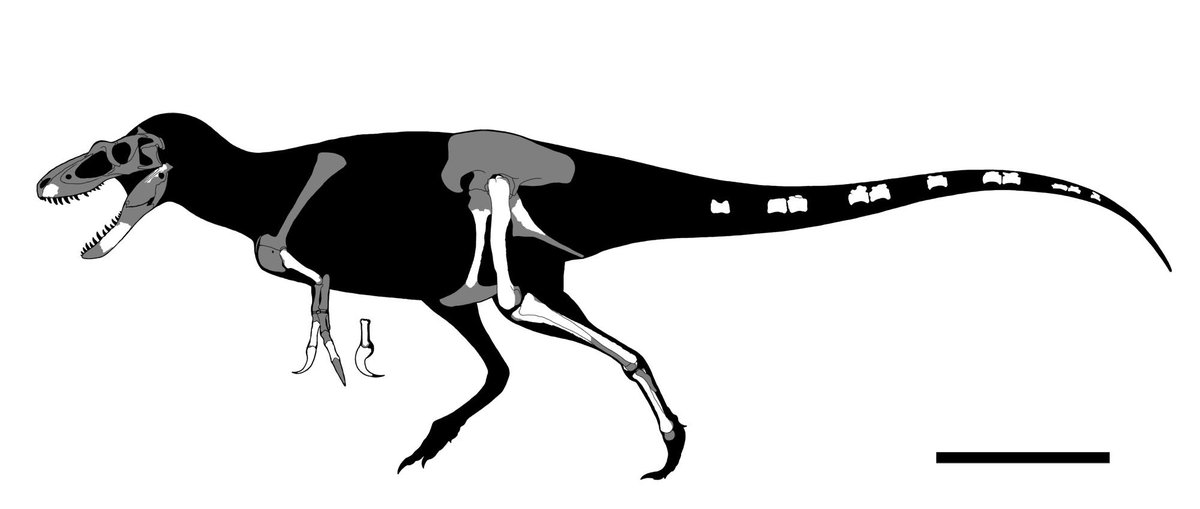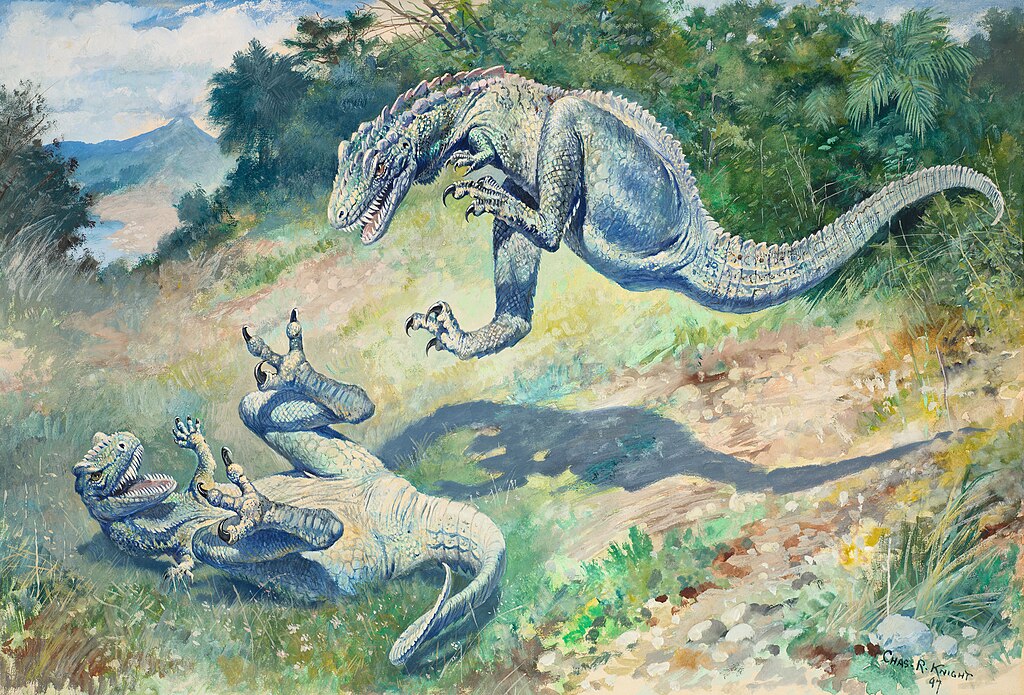
+- WildFact (https://wildfact.com/forum)
+-- Forum: Information Section (https://wildfact.com/forum/forum-information-section)
+--- Forum: Extinct Animals (https://wildfact.com/forum/forum-extinct-animals)
+---- Forum: Dinosaurs (https://wildfact.com/forum/forum-dinosaurs)
+---- Thread: Dryptosaurus aquilunguis (/topic-dryptosaurus-aquilunguis)
Dryptosaurus aquilunguis - DinoFan83 - 02-23-2021
Dryptosaurus is a genus of tyrannosauroid that lived approximately 67 million years ago during the latter part of the Cretaceous period in what is now New Jersey. Although largely unknown now outside of academic circles, a famous painting of the genus by Charles R. Knight made it one of the more widely known dinosaurs of its time, in spite of its poor fossil record. First described by Edward Drinker Cope in 1866 and later renamed by Othniel C. Marsh in 1877, Dryptosaurus is among the first theropod dinosaurs known to science.
Dryptosaurus is estimated to have been 6.4 metres long and to have weighed 750 kg, although this is based on partial remains of one individual. Like its relative Eotyrannus, Dryptosaurus seems to have had relatively long arms when compared with more derived tyrannosauroids such as Tyrannosaurus. Its hands, which are also relatively large were believed to have had three fingers. Brusatte et al. (2011), however, observed an overall similarity in the shape of the available phalanges of Dryptosaurus with those of derived tyrannosaurids and noted that Dryptosaurus may have had only two functional digits. Each of its fingers were tipped by an eight-inch, talon-like claw. Its forelimb morphology suggests that forelimb reduction in tyrannosauroids may not have proceeded in a uniform fashion. On the whole, the animal had more primitive features compared to species like Tyrannosaurus known from Laramidia, which suggests Appalachia's relative isolation allowed earlier forms of non-megaraptoran tyrannosauroids to make it to the end of the Cretaceous period.
Although undoubtedly a predator, the paucity of known Cretaceous East Coast dinosaurs make ascertaining the specific diet of Dryptosaurus difficult. Hadrosaurids are known from the same time and place as Dryptosaurus, the island continent of Appalachia, and they may have been a prominent part of its diet. Nodosaurs were also present, although less likely to be hunted due to their armor plating. When hunting, both the skull and hands were important for the capture and processing of prey.
RE: Dryptosaurus aquilunguis - DinoFan83 - 02-23-2021
Dryptosaurus mounted skeletons by Lev Lazinskiy.

*This image is copyright of its original author
Dryptosaurus size chart by Conty on Wikimedia Commons.

*This image is copyright of its original author
Dryptosaurus by GetAwayTrike.

*This image is copyright of its original author
Dryptosaurus life restoration by Durbed on DeviantArt.

*This image is copyright of its original author
Some of the preserved bones of Dryptosaurus from Cope (1871).

*This image is copyright of its original author
Leaping Laelaps by Charles R. Knight.

*This image is copyright of its original author